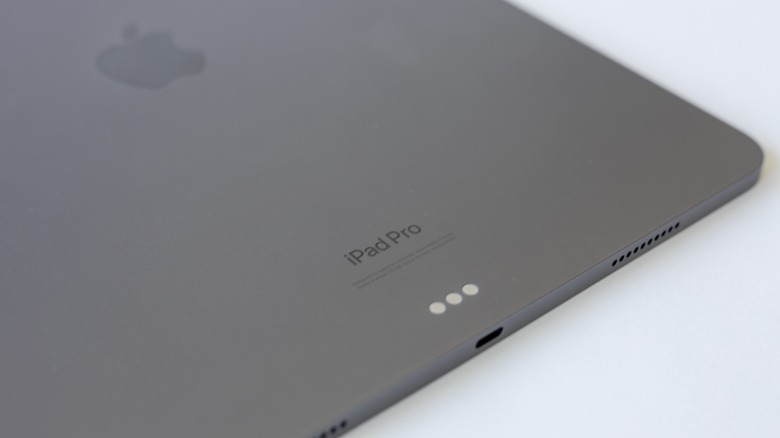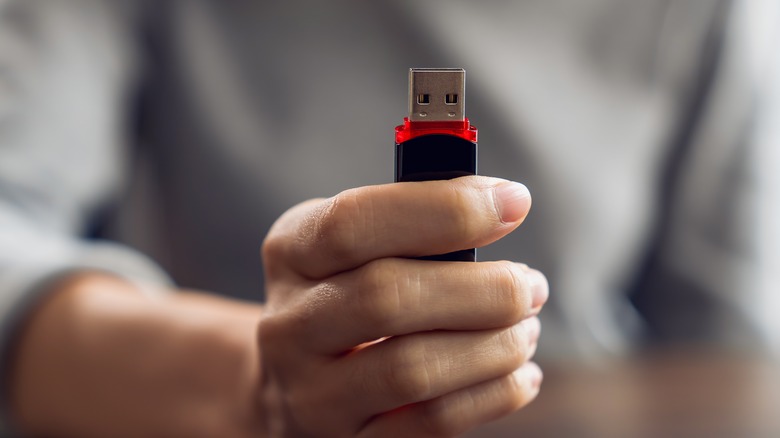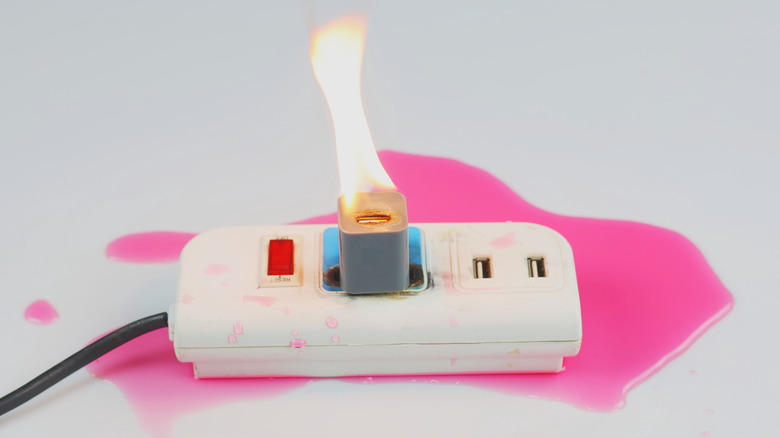Never Plug These Things Into Your iPad's USB-C Port
Owning an iPad makes watching videos, checking email, and gathering information more convenient than doing so on a phone. However, owning and using an iPad is also a responsibility. Anyone who buys Apple products regularly can tell you that these devices aren't cheap, and it would definitely behoove you to take all precautionary measures to ensure you don't need to pay a lump sum to either repair a damaged device or replace it entirely.
One of your iPad's most critical weak points is its USB-C port. That port is the lone point of external, physical entry into both your iPad's mechanical inner-workings and critical software. There is a lot you can do with your iPad's USB-C port, particularly in regard to plugging in and using various gadgets and accessories. There's nothing inherently wrong with using the port in that way; indeed, that's what it's meant for. But just because you can plug many things into that port doesn't mean you should plug anything into it. There are two things in particular you should keep well clear of your iPad's USB-C port: random, unknown flash drives or external storage, and cheap, no-name chargers.
Don't plug random flash drives into your iPad
Have you ever found a random flash drive on a table in a public place? Good Samaritan logic dictates that you should either leave it alone or turn it in to an authority figure. However, there is always a bit of an insidious temptation when you find a random piece of digital storage, a little imp on your shoulder that's just dying to know what's stored within. You'd do well to resist that temptation, not just for the obvious ethical reason, but because there could be some serious gremlins lurking on that unmarked drive.
Certain bad actors throughout the world make a game of purposefully leaving dangerous flash drives in public places in the hopes that someone will plug it into their device. These dangerous drives typically take one of two forms: either they're loaded up with malware and viruses, or they're dedicated USB killer sticks. Malware is less of a problem for iPads, as their OS is naturally hard to penetrate, but killer sticks are a different story.
These are flash drives loaded with special circuitry that instantly injects high-voltage currents into whatever they're plugged into, completely frying internal systems. These kinds of devices are supposed to be used for pen-testing and law enforcement, but anyone with enough money and not enough scruples could purchase one and leave it somewhere, hoping you plug it into your iPad and completely brick it.
Don't use cheap, no-name chargers
We get it: name-brand Apple accessories cost more than they probably should. A regular 20W USB-C power adapter for your iPad costs $19 from the Apple Store, plus another $19 if you throw a charging cable in. You can almost certainly get a charger of comparable quality for less cash if you lost the power brick your iPad came with. However, that assurance comes with an important qualifier: you should stick to charging accessories from well-known, trustworthy cord and charger brands like Anker, Belkin, or Mophie.
There are a lot of bargain bin, no-name chargers out there on storefronts like Amazon or Temu. These chargers may purport to have the same capabilities and safeties as your Apple-branded charger, but you only really have their word to go on for that. If a brand trying to sell you a charger doesn't even have a website or other tangible online presence, that word doesn't mean much of anything.
These kinds of chargers may be made with cheap, inferior components that could end up frying your iPad's charge controller. Buying no-name chargers might save you some cash in the short term, but those savings will be immediately cancelled out when you have to pay exponentially more to have your iPad serviced or replaced.


